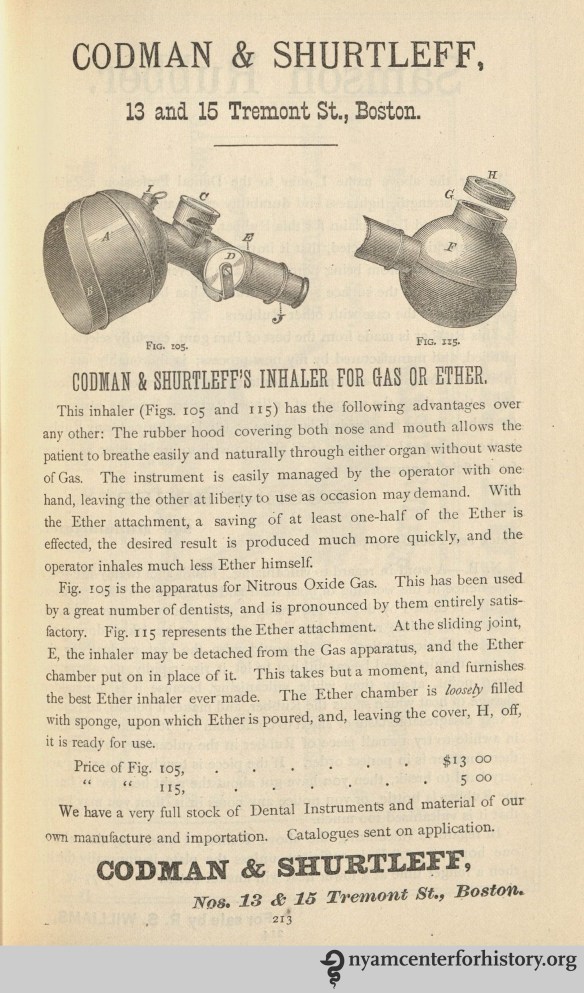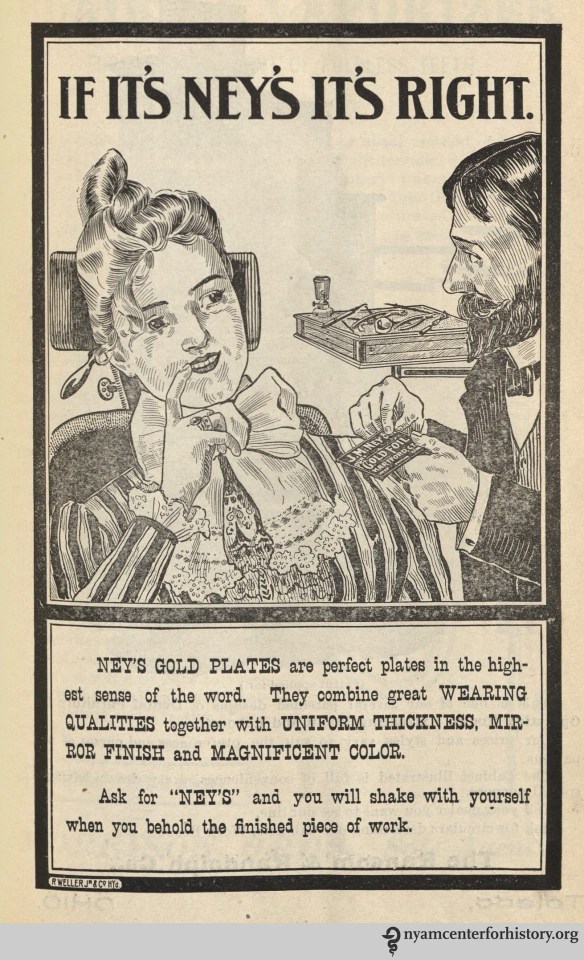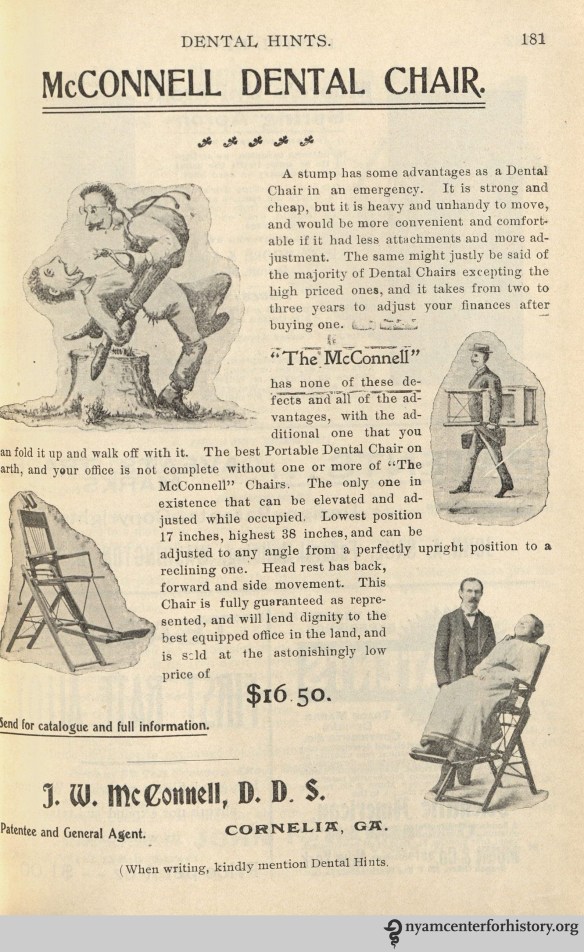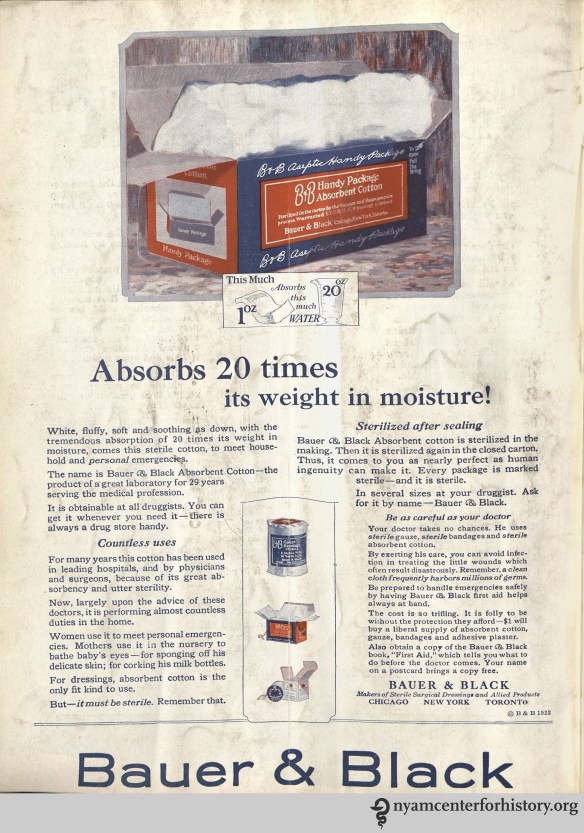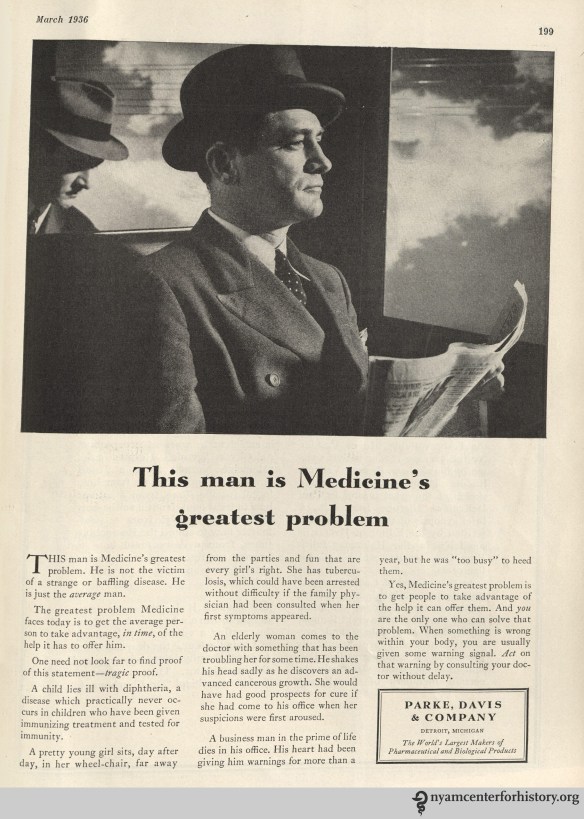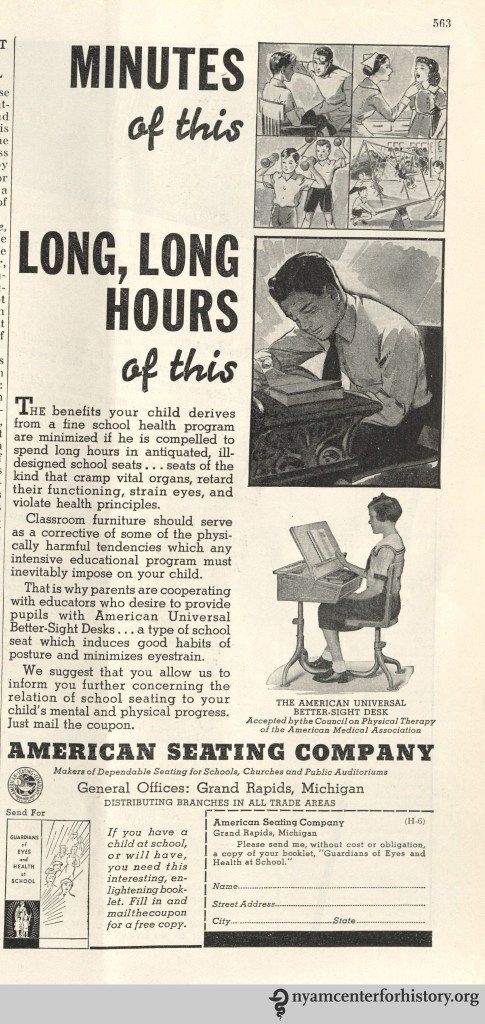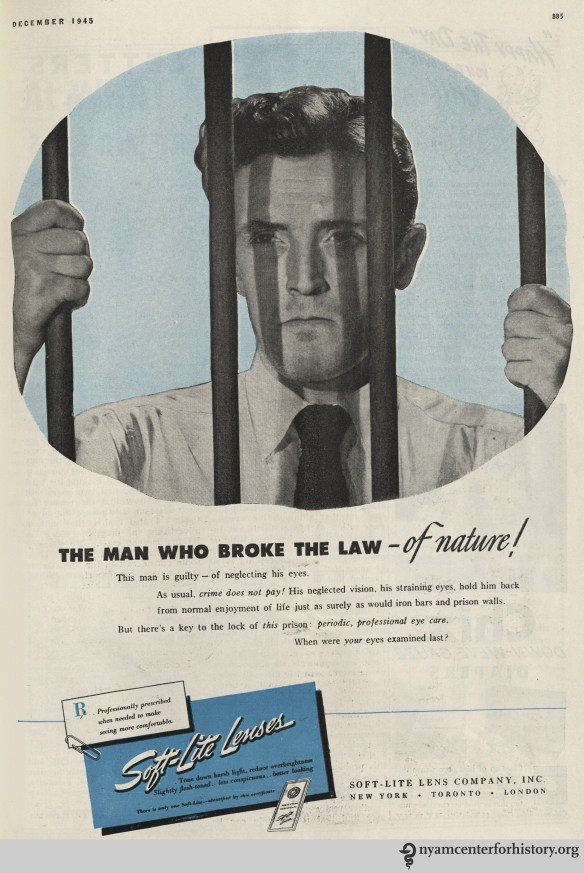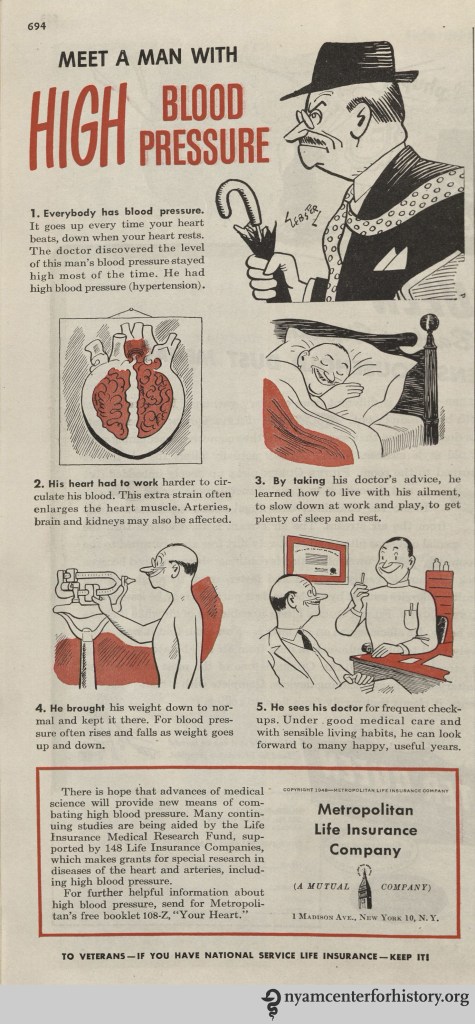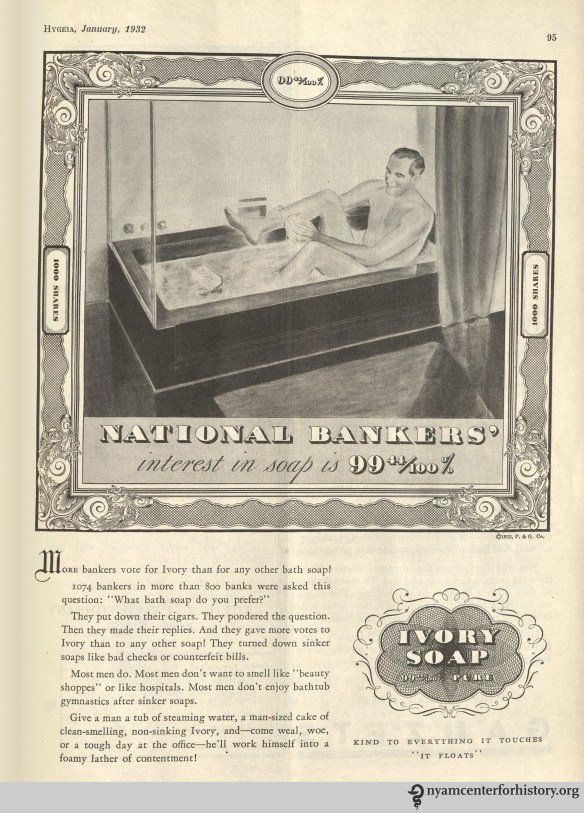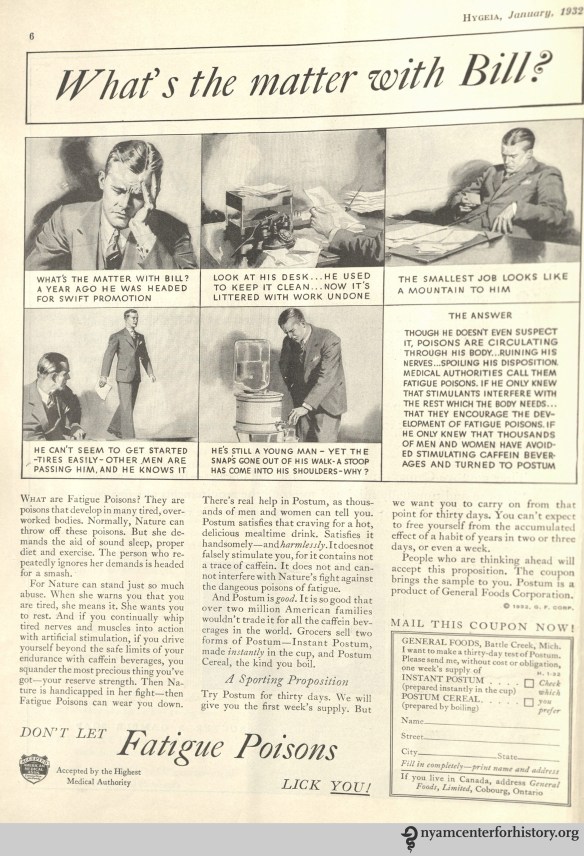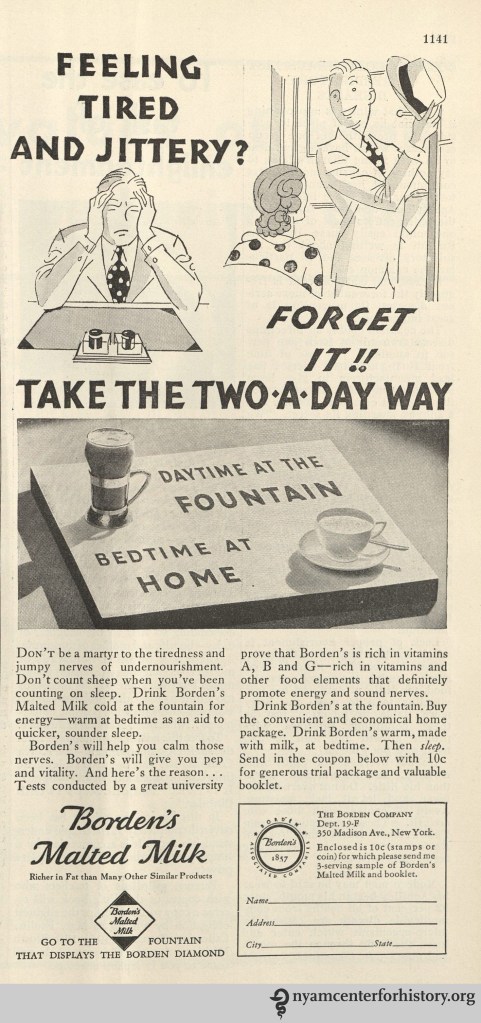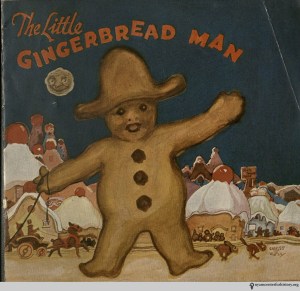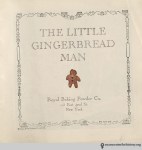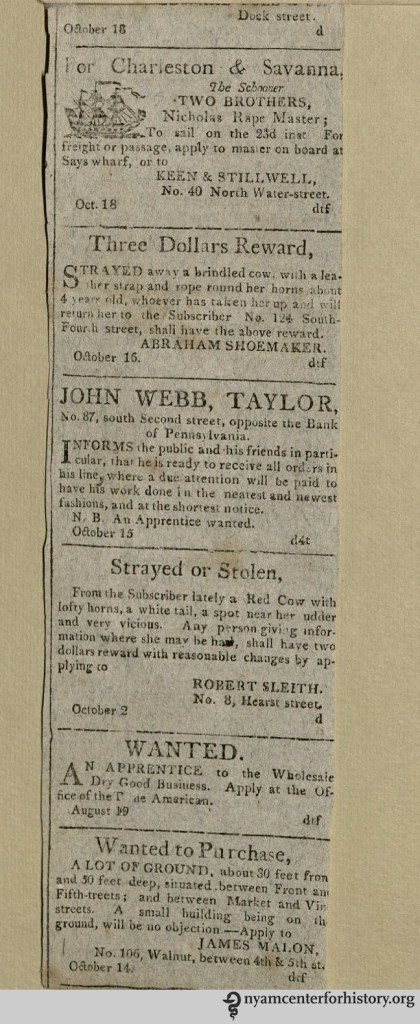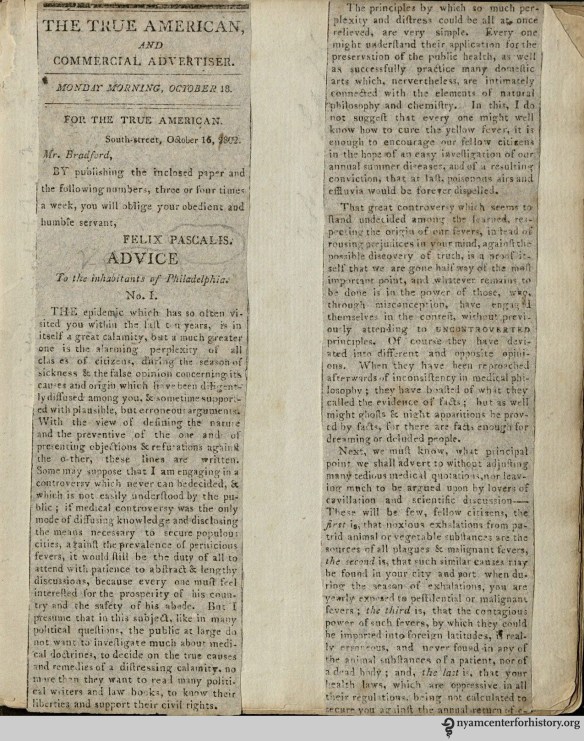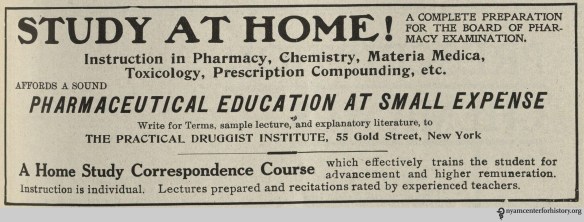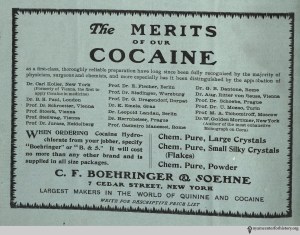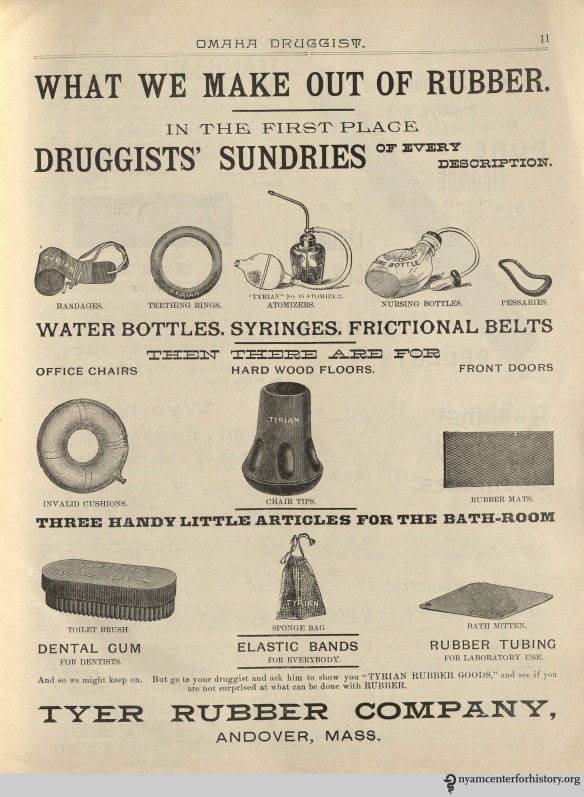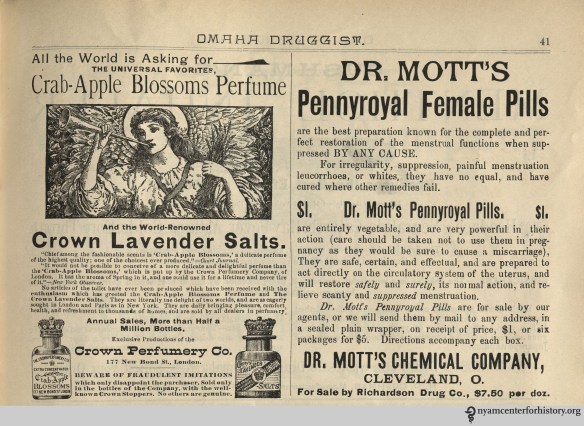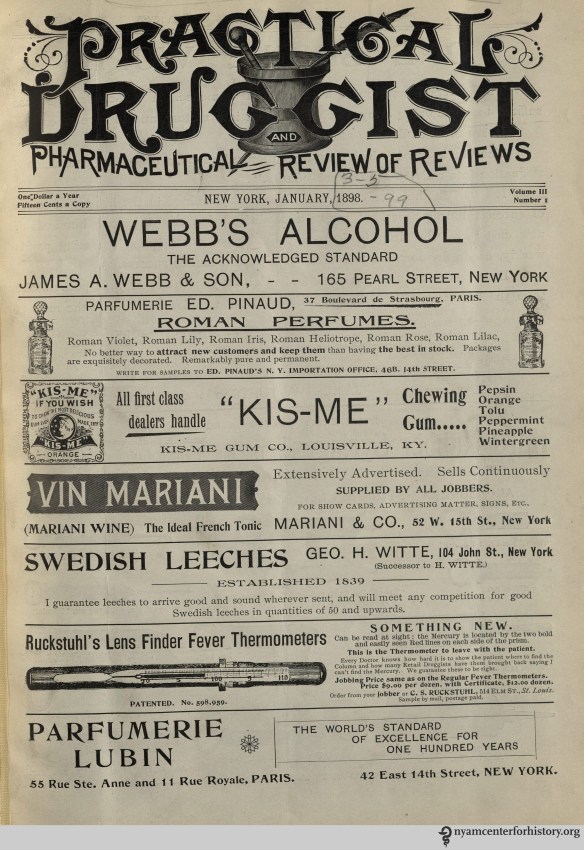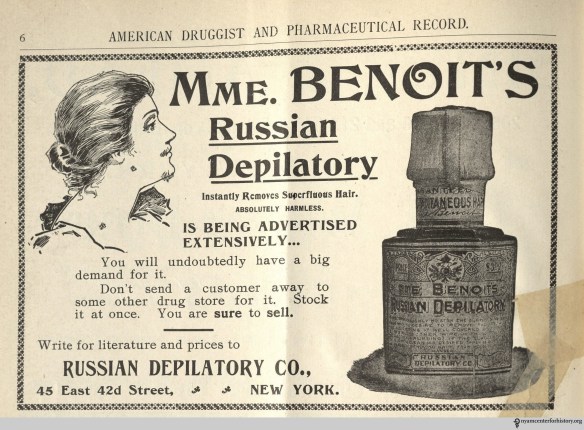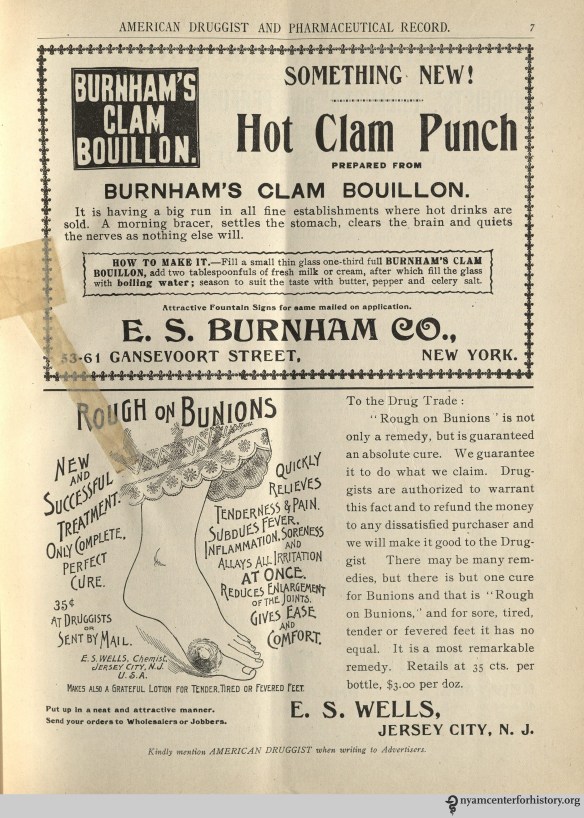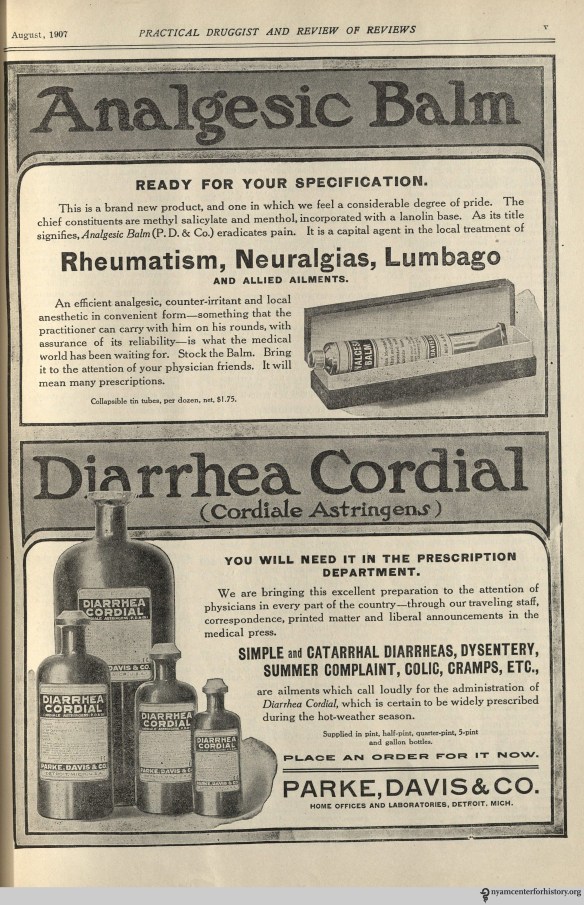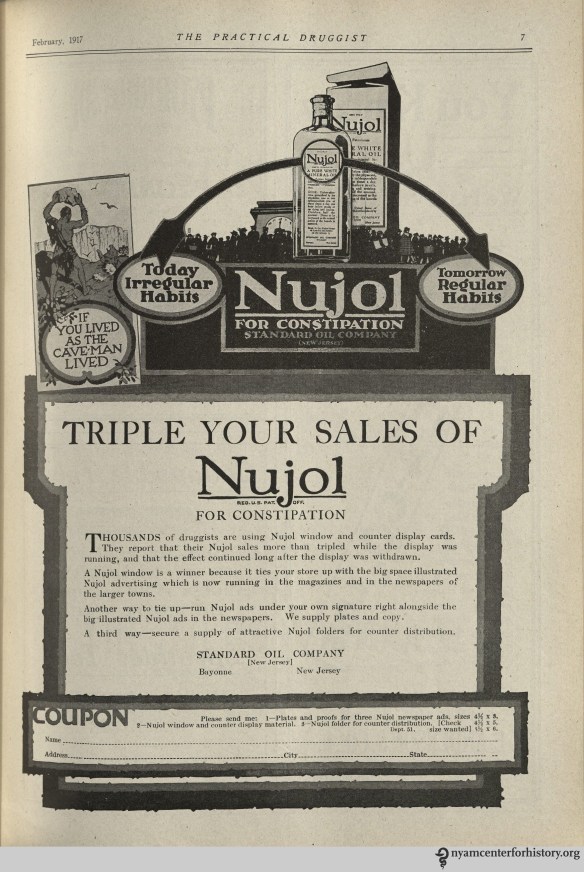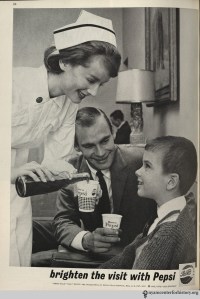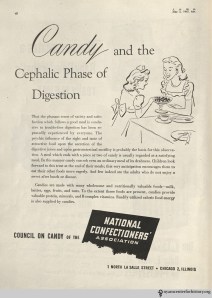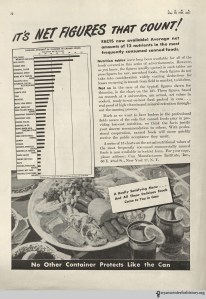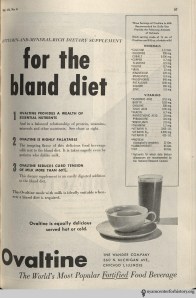By Joseph Bishop, Princeton University, and the Library’s 2022 Audrey and William H. Helfand Fellow
Mr. Bishop completed his Fellowship residency in summer 2022 and will present his research by Zoom on November 8 at 4:00 (EST). To attend his talk, “Pharmaceutical Visions: How US Drug Companies and Ad Agencies Revamped Their Credibility by Marketing with Scientific Imagery,” register through the Academy’s Events page.
This spring I spent weeks immersed in the vast historical materials available at the New York Academy of Medicine (NYAM) Library. I had the honor of receiving the Audrey and William H. Helfand Fellowship to pursue a project that I believe would have interested Bill Helfand: an examination of the changes in medical advertising at the turn of the twentieth century. During his life, Helfand amassed an extensive collection of fascinating drug and medical memorabilia and visual art. Much of his collection and work illuminates the dynamic between drugmakers and the public during the late nineteenth and early twentieth century. Significant portions of Helfand’s collection are available at NYAM, and I took advantage of the richly colored and wide-ranging collection of patent medicine trade cards. NYAM also has mountains of pharmaceutical, medical, and allied trade journals and magazines brimming with pharmaceutical advertisements.
At the turn of the twentieth century, the American public saw the rise in large corporate pharmaceutical companies, national and corporate advertising, and federal drug regulation. An important question is what prompted the transformations in medical visual culture that helped to portray drug companies as scientific and research-oriented. To answer that question, I compare late-nineteenth-century patent medicine trade cards with medical ads in Ladies’ Home Journal in the 1920s. This comparison reveals a transition from entertainment and fantasy to a preoccupation with scientific progress and medical authority. My research at NYAM has led me to conclude that drug companies and ad agencies emphasized scientific and medical imagery to revamp their medical credibility and professional image amid national drug regulation and the public’s anger with the industry’s past association with patent medicine.
American patent medicine companies faced scrutiny for producing nostrums with cryptic contents and questionable efficacy during the first decade of the twentieth century. They depended on local advertisement imagery that reflected the nineteenth-century public’s anxieties and aspirations. Popularizations of science were created for various reasons—from entertainment to informing citizens—but they all served to increase scientific and medical awareness within the American public. Philadelphia-based ad agency N. W. Ayer’s accounts show that patent medicine was their most lucrative commodity category, carrying 26 percent of their total revenue in 1878, and their second-most lucrative commodity in 1900, carrying 15 percent. By 1879 in the US, more than 400 religious weeklies each needed a steady flow of advertising revenue to stay in business. Newspapers generated patent medicine business, and medical advertisements sustained newspapers. Nostrum manufacturers developed new marketing techniques, created novel distribution systems, pioneered brand-name products, became an economic link between urban and rural centers, and expanded markets.
Americans living through the last two decades of the nineteenth century saw an explosion of advertising trade cards. Retailers gave away these pocket-sized cards, often stuffed in product packaging as a bonus and easily collectible by customers. Patent medicine companies used these cards extensively, as they proved to be a very successful sales medium. Many people collected cards into albums and created scrapbooks, which children sometimes received as birthday or Christmas gifts.

Dr. J. C. Ayer & Co. (Lowell, MA)
Produced ca. 1875–1895
From the William H. Helfand Collection of
Pharmaceutical Trade Cards at The New York Academy of Medicine
Chromolithograph, 6.1 x 11.6 cm

Trade cards such as Ayer’s Ague Cure (Image 1) evoke an aura of connection with nature and adaptation to the surrounding environment. The image in the bottom right corner depicts an alligator and a couple of frogs discussing Ayer’s Cure as if they used it to protect themselves from malaria. The ad implies that Ayer’s product helps one adapt to one’s environment just as well as the alligators and frogs adapt to theirs.

Product: Cas-car-ria
Produced ca. 1875–1895
From the William H. Helfand Collection of
Pharmaceutical Trade Cards at The New York Academy of Medicine
Chromolithograph, 5.8 x 7.8 cm
On the other hand, Cas-car-ria’s trade card (Image 2) depicts a young girl holding a switch and a dog together, fending off miniature demons labeled with ailments. Cas-car-ria’s ad evokes notions of animal protection and self-protection, implying that when patients take Cas-car-ria, they harness the animal within, unleashing the strength required to fight off external demons.
The explosion of ads promoting proprietary medicines and their incessant hyperbole and mistruths eventually provoked strong public reactions that demanded transparency and regulation. There were always calls to rein in the quackery, but the inundation of promotion drove the regulation of patent medicine to become a public priority.

Ladies’ Home Journal, February 1924, p. 144
Manufacturer: E. R. Squibb and Sons
From Ohio State University
Examining Ladies’ Home Journal during the 1920s illustrates these changes in advertising. At this point, advertisements offered a different portrayal of scientific medicine and appealed to a more docile public regarding medical professionals. A Squibb pharmaceutical ad depicts a well-organized medicine cabinet (Image 3). The caption asks, “What is in your medicine cabinet? Are they products your physician would approve?” This approval seeking from medical authority plays into the new values of placing faith in the trained judgment of scientific and medical authority.

Ladies’ Home Journal, March 1924, p. 192
Manufacturer: Zonite
From Ohio State University
Ads for Zonite (Image 4) ran images of scientists wearing lab coats and examining test tubes, drawing a scientific aura into its products. Zonite also associated its product with scientific discoveries, like the Carrel-Dakin fluid (i.e., diluted bleach), a critical antiseptic used in World War I.

Ladies’ Home Journal, May 1921, p. 49
Manufacturer: Northwestern Yeast Co. (Chicago, IL)
From the University of Michigan
The ad for “Yeast Foam” (Image 5) also appeals to scientific and medical authority, depicting a man wearing a medical coat and peering into a microscope. In the foreground are two circular illustrations of microscopic specimens—one containing germs and the other germ-free. The ad portrays a professional man immersed in scientific work, suggesting that the product has been carefully vetted through scientific scrutiny for quality assurance.
Similarly, the Fleischmann advertisement (Image 6) depicts two men in lab coats working at a table equipped with flasks, a beaker, a microscope, and other scientific instruments. The caption below the image states, “Messages of startling importance from the laboratory of the scientist.” Text within the ad notes how Fleischmann’s Yeast cures various diseases. In the case of skin diseases, the ad relies on a general sense of medical authority: “Many physicians and hospitals are prescribing Fleischmann’s Yeast for impurities of the skin. It has yielded remarkable results.”

Ladies’ Home Journal, September 1921, p. 45
Manufacturer: The Fleischmann Company (New York, NY)
From the University of Michigan
The values of corporate ad agencies following the patent medicine era are not only a reaction to muckraking journalism and reform movements. The use of scientific medical imagery conveying authority and professional judgment was also largely about revamping the medical credibility of US drug companies and corporate ad agencies; they benefited handsomely during the patent medicine era but later needed to diminish their connections to these fraudulent products. Ad agencies traced the American public’s anxieties and aspirations as they shifted from loose whimsy about panaceas in the late nineteenth century to a reverence for qualified scientific and medical experts and institutions at the beginning of the twentieth century. By tracing this transition in medical imagery, we can glean how drug companies and ad agencies shaped products to elevate their professional clout.



